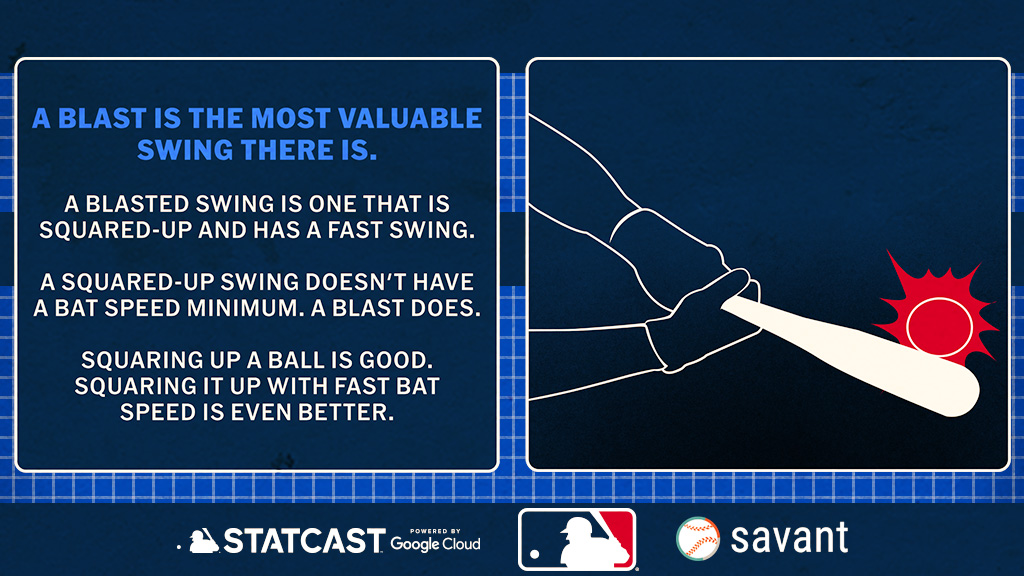Blasts
Definition
A blast, in Statcast terms, is when a batter squares up a ball and does so with a minimum amount of bat speed. (To best understand, please review the definition for a squared up ball, or the efficiency of a batter’s contact first.)
While a squared-up swing expresses the relationship between how much exit velocity is possible given the speed of that swing+pitch and how much exit velocity was actually realized, it does not strictly have a bat speed minimum requirement. A blast, then, is a more valuable and rarer kind of swing, taking only the most valuable combinations of hard swings and contact efficiency.
Due to the combination of squared-up rate and swing speed, the qualifications for a blast are on a rolling scale based on the interaction of one metric with the other. The strict definition is percent squared up*100 + bat speed >= 164, but an easier shorthand way to consider it is that the average between squared-up rate and bat speed has to be at least 82 in order to be a blast.

So, for example, this Shohei Ohtani home run [video link] counts as a blast, because his bat speed was an excellent 82.8 MPH, and it was 93% squared up. The resulting average of 88 exceeds our threshold of 82.
But this Ohtani fly out [video link], despite being similarly well-squared-up (92%), does not count as a blast, because his bat speed was a mere 80 MPH – and the resulting average of 81 does not cross our threshold.
Squaring a ball up is important. Squaring it up with good bat speed is even better.
In the first month of 2024, 11% of swings and 14% of contacts were ‘blasts,’ and the value difference between them were about as large as you can get.
Blasts (i.e., squared-up with a hard swing)
.545 BA // 1.116 SLG // .706 wOBA // 99.9% hard-hit rate // +32 run value per 100
Not blasts
.177 BA // .221 SLG // .174 wOBA // 17% hard-hit rate // -6 run value per 100
You may view the current season’s blast leaderboard here.